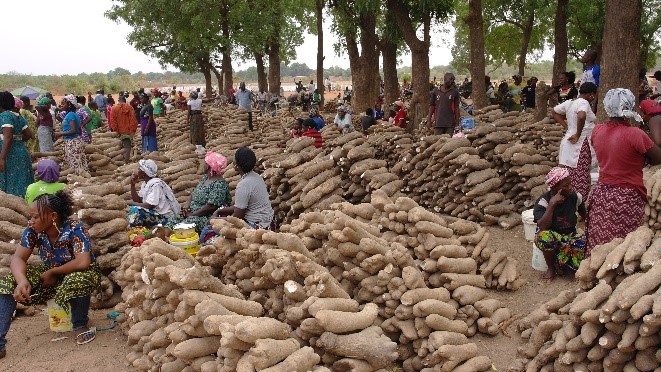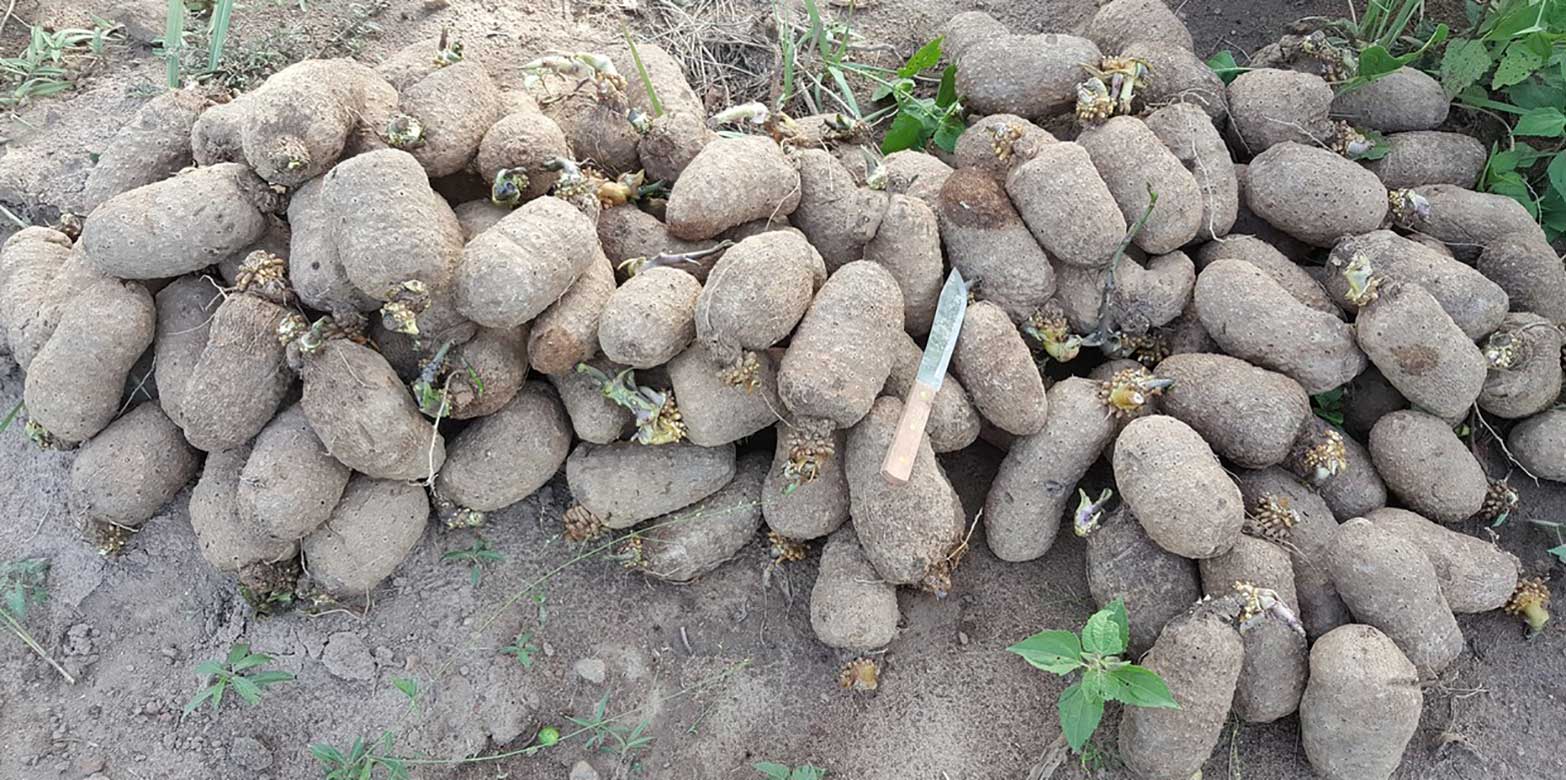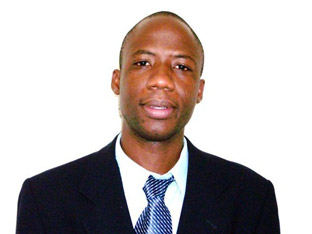Sustainable yam systems in West Africa
Yams are tuber crops and an essential staple food in West Africa. But the traditional cropping systems are unproductive and degrade soil. The YAMSYS project seeks to change this in cooperation with local actors working along the yam value chain.
Yams (Dioscorea species) are not often found on the Swiss dinner plate, but surprisingly, some Swiss organic farmers produce and sell yams (Lichtwurzel) for their benefits to human health. You can also find yam products in pharmacies.
However, the largest yam markets are found in the tropics, especially West Africa. Besides being a very important staple food, they are also a crucial source of cash for farmers growing them. And yams play a versatile cultural role: they are used in inaugural, wedding, and funeral ceremonies and whole yam festivals are organized before harvesting them.
But why should we work on yams?
There are actually 600 yam species worldwide, and only about 20 are cultivated. But very little research has been done on these plants despite their importance. Thus, yams are considered an “orphan crop”. On the other hand, soil fertility depletion has been repeatedly mentioned as a factor that limits yams and other crops production in West Africa. Therefore we have been working in Ivory Coast and Burkina Faso since January 2015 on a transdisciplinary project, called YAMSYS [1], to improve soil fertility management for sustainable yam production.
Biodiversity under pressure
Traditionally, West African farmers grow yams without any fertilizers or pesticides. But yams demand a very high level of soil fertility, so the farmers plant them directly after slashing and burning the long-term forest- or savanna-derived fallow, or the “natural” vegetation that was on the field. Nevertheless, yam tuber yields are on the average lower than 10 tons per hectare per year, which is barely a fifth of the potential yield.
Furthermore, as the population density increases in West Africa, surfaces under “natural” vegetation or old fallows are becoming scanter and more and more remote from villages. Thus yields are predicted to go even further down if management is not improved. And this will lead to an increased loss of biodiversity due to more and more pressure to cut high-biodiversity vegetation further from the village.
Accounting for local constraints

Although the causes of soil degradation are known and techniques to restore soil fertility have shown promising results, very few of these techniques have been adopted by smallholders. Experience has taught us that the transfer of technical solutions to farmers in the contexts of West Africa often fails, because scientists do not pay sufficient attention to the diversity of constraints farmers are facing. Understanding these constraints, however, requires the establishment of a dialogue with the actors involved.
Thus, the pertinent question is: What can we do in order to promote measures that are acceptable and adopted in a sustainable manner?
A holistic approach
First, we committed to address these challenges in an interdisciplinary manner. Potential technical solutions can be derived from basic agronomic principles: adding organic matter, mineral fertilizers, using healthy seeds, using improved planting material, growing the plant in long-term rotations (succession of cultures) etc. But these measures must do more than simply function technically in a local context, they also need to be acceptable and feasible from the perspective of both economics (do they pay off) and society (cultural role of yams, compatibility with beliefs and taboos).
Second, we decided to work with the most important stakeholders involved in the yam value chain in so-called innovation platforms. These platforms include representatives of the farmers, fertilizer and pesticide sellers, agricultural extension agencies, yam transporters, traders and processors as well as the authorities, media, micro-credit agencies and research institutions.
Together we identified and ranked the most important bottlenecks for yam production: land scarcity, unpredictable rainfall, soil fertility depletion and bad-quality planting materials (“seeds”). As land scarcity and climate are difficult to address, we decided together to mainly develop measures to improve seed quality and soil fertility.
Enabling change
Plots demonstrating the production of high-quality yam seeds have been established for two years and used as school fields and as a source of seeds for farmers. In parallel, we are testing site-specific integrated soil fertility management practices (involving the use of improved yam cultivar, and different types of nutrient inputs and crop rotations) in “controlled” fields managed by the YAMSYS team. These first field experiments show promising results in some sites, with tuber yields much higher than those observed in farmers’ fields.
In spring 2017, farmers started to identify innovations of interest and to test them in their own fields. The YAMSYS team will not intervene in their fields but will monitor farmers’ yields, the impact of adopted innovations on income, and farmers’ willingness to futher implement these innovations.
This is the first time that such an inclusive approach has been taken for a tropical tuber crop. We think that this design will make a sustainable contribution to improved food security, income and environmental sustainability for smallholders in West Africa.
Delwende Kiba has written this blog post together with Emmanuel Frossard and Johan Six.
Further information
[1] The YAMSYS external pageproject websitecall_made


